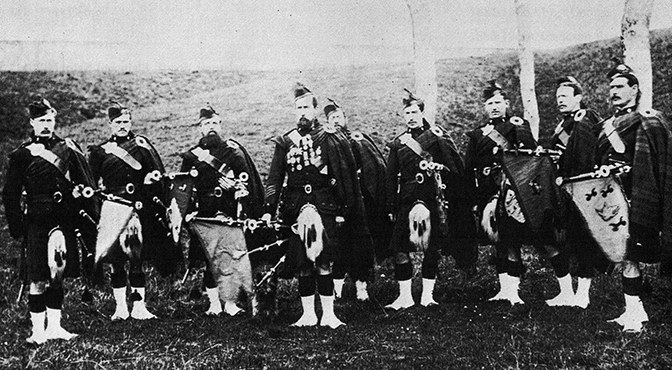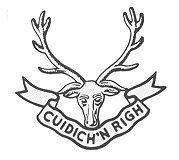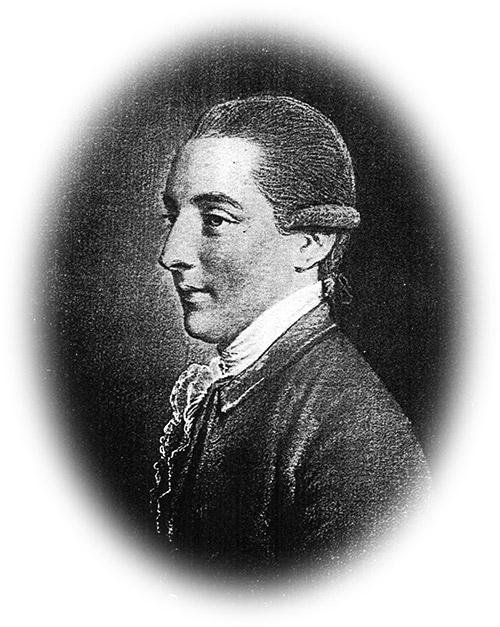
Today we continue with our abridged excerpts from the above book by Ian Hamilton Mackay Scobie. The book was published in 1924 and is now out of print. This excerpt talks of regimental dress and has an interesting take on piobaireachd, with the suggestion that it can only be played properly by pipers from the ‘North’. Above is a picture of Seaforth militia pipers in 1880 under P/M Ronald MacKenzie….
 From earliest times, as we have seen, the Pipe Major carried the Regimental Banner, which was that of the Colonel’s, on great occasions, the other pipers carrying those of their captains. The banners always bore the badge of the regiment on one side and, latterly, the private crest of the officer on the other, the Colonel’s banner, in addition having the Union [Jack] in the top inside corner.
From earliest times, as we have seen, the Pipe Major carried the Regimental Banner, which was that of the Colonel’s, on great occasions, the other pipers carrying those of their captains. The banners always bore the badge of the regiment on one side and, latterly, the private crest of the officer on the other, the Colonel’s banner, in addition having the Union [Jack] in the top inside corner.
In the 72nd however, the custom of embroidering the officers’ own crest on their banners appears to be of comparative recent origin, certainly not dating further back than the 70s of last century. The Colonel’s banner has not always borne the Union flag.
In matters of dress, the pipers of the 72nd ( as in other Highland corps) wore the same uniform as the rank and file, although armed with the broadsword up to 1809. During the period 1808 to 1823, when the regiment lost the Highland garb, the pipers, who were retained, wore ordinary line uniform….. On the 72nd resuming the Highland dress, but with trews, in 1824, the pipers wore the kilt and plaid of Stuart tartan, red and white (soon change to Stuart tartan) hose and buckled shoes…They had a black leather shoulder belt, broadsword, sporran and red hackle in the feather bonnet. To these appointments were added a waist belt, dirk and a shoulder brooch, circa. 1840.
In about 1850, a green doublet and blue glengarry bonnet were taken into wear. This dress lasted, with few alterations or additions, until 1822 when the regiment became the 1st Seaforth Highlanders. The tartan was then changed to MacKenzie and the pattern of the badges worn altered to suit the new title of the regiment.
[wds id=”2″]

In regard to music, until about 1850, the ‘Ceol Mòr’ (Big Music), or Piobaireachd, was the only music permitted to be played, except when on the march, when the ‘Ceol Aotrum’ (Small Music), i.e. marches and quicksteps were allowed, or, for dancing, reels, strathspeys and jigs. After the above date the ‘small music’ supplanted the longer and more difficult ceol mòr, the later, however, still being played on guest nights in the Officers’ Mess and on certain other occasions either by the Pipe Major or a selected piper.
All pipers do not now learn piobaireachd, although no piper is a finished performer until he can play and has a fair knowledge of the classical or ‘big’ music. The word ‘piobaireachd’ in English, is ‘piping’ simply, but in time it has come to mean the Big Music (Ceol Mòr). This word has sometimes been shortened to ‘piobrach’ but it is now more commonly (phonetically) spelt in English as ‘pibroch’. To Sir Walter Scott we owe this style of spelling which he adopted for his English readers.
Piobaireachd is usually of five different kinds: The Cruiuneachadd (Gathering), Failte (Salute), Cumha (Lament), Caismeachd (War Tune) and Spaidsearachd (March).
Besides these there are numerous descriptive pieces, especially those commemorative of battles. A Piobaireachd, a lengthy piece of music, may be defined as a theme with variations and is the symphony of bagpipe music. To a person, however musical, who has not heard this species of music before, it may seem, with its strange and peculiar passages, to be devoid of meaning or musical interest.
On being accustomed to hear it, however, he will soon appreciate its worth and genius when well played. To properly understand piobaireachd one must be of the North and familiar with the circumstances under which the tunes were composed.
A piobaireachd is divided into parts, the first being the ‘urlar’ (the groundwork, adagio or simple melody), followed by its variations which are termed the ‘suibhal’ [shoo – al] and the taorluath and their doublings. These become more complex and intricate until the piece concludes with the crunluath, the final or closing part, with its quick and open movements and, in the larger pieces its tripling (i.e. crunluath breabach, crunluath fosgailte and crunluath a mach). A crunluath is properly finished by repeating the urlar and thus is similar to what is known among musicians as a ‘rondeau’, i.e. a piece of music ending with the repetition of the first part.
• To be continued. Read the first instalment of this feature here.
[wds id=”3″]
















Recent Comments